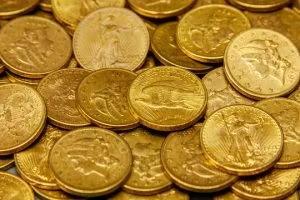How the Gold Market has Changed Over the Last 30 Years
Posted on — 1 CommentRecently, the World Gold Council took a look back at the gold market over the last 30 years. Their analysis reveals how much the asset has changed technology, investment markets, and central bank activity across the globe.
Their research not only shows how gold has influenced the development of the modern world, but also offers clues on how that influence may continue.
Here, we offer a summary of their findings, which look at several factors including changing sources of demand, central bank use, and investment outcomes.
Global Production is Becoming More Diverse
“Diversification” could be used to describe several gold trends over the last 30 years. Consider that gold demand generated by jewelry and technology represented about 60% of gold demand over the decade spanning 1992-2002. Today, that number has dropped to about 44% of the annual average gold demand.
This trend toward diversification is present in other areas of the gold market. In the early 1990s Asia represented about 45% of total demand. This figure has since risen to 60%, an increase underpinned by the region’s economic growth over the decades.
Lastly, mine production has diversified. Gold production has become more evenly spread across mines located in Europe, Asia, North America, Africa, South America, and Oceania. As the World Gold Council reports, this is a benefit to gold because “dispersion allows for more stability in primary supply and reduces the risk of supply shocks, a feature already supported by gold’s abundant above-ground stock.”
The Global Financial Crisis Changed Gold
Before the global financial crisis of 2008, Europe was a net seller of gold. The combination of the global financial crisis and the following Sovereign Debt Crisis prompted investors to seek more reliable stores of wealth. Consequently, European investment demand increased over 500% to 238t year-over-year in 2008. While the surge was brought on by the crisis, the trend of strong investment demand has continued. Since 2008 demand in the region has averaged 242t per year.
Moreover, a key change to the financial market just prior to 2008 has made it easier to satisfy this demand. Gold ETFs became available in 2003 and have amassed approximately 3,473 tons over the last 20 years. Supplementing this, bar and coin demand remains robust globally and particularly in the European market which represents about 20% of the current demand for physical gold.
The Central Bank Becomes a Net Buyer of Gold
An interesting reversal occurred in 2010. Central banks became net buyers of gold after more than a decade of net selling activity. This earlier period of net selling was largely precipitated by a drive to reduce gold holdings in response to the end of the gold standard and the Bretton Woods system.
The reversal was due, in part, to the global financial crisis and growing purchases from emerging markets in tandem with slowing sales seen in Western markets. At the end of last year, global gold reserves reached 35,000t which accounts for 20% of the above-ground stock.
What it All Means for Investors
Diversified production and demand coupled with sustained European and central bank demand have all been supportive of gold’s outperformance, as measured by percent return, over other asset classes like global bonds, commodities, and US cash between 1992 and 2022.
Over the past three decades, the price of gold has increased more than six-fold with a 5.8% annualized return over that same period.
The data in the World Gold Council’s report brings new context to the role of gold in a period of persistent inflation, recession fears, and destabilizing geopolitical relations. Investors need a reliable store of wealth with substantial long-term return potential. Gold is the answer.
Want to read more? Subscribe to the Blanchard Newsletter and get our tales from the vault, our favorite stories from around the world and the latest tangible assets news delivered to your inbox weekly.
1 thought on “How the Gold Market has Changed Over the Last 30 Years”
Comments are closed.








i agree. Gold mined has doubled since the last bull run in 1980.. The population has expanded18 times since then. The money supply has increased 55 times since. That means gold should rise in value . Demand dollars are alot greater than supply. This is real money because it takes work to produce it.
honest work for honest money to buy honest goods.